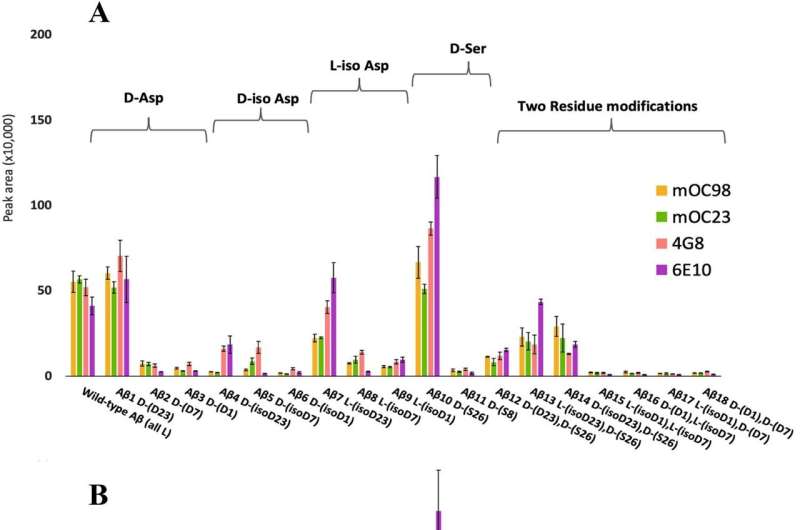This article has been reviewed according to Science X's editorial process and policies. Editors have highlighted the following attributes while ensuring the content's credibility:
fact-checked
peer-reviewed publication
trusted source
proofread
New methods for identifying, characterizing irregular forms of amyloid beta to inform Alzheimer's treatments

Scientists believe a buildup of the brain protein amyloid beta plays a key role in the death of neurons, which can lead to Alzheimer's disease. Although most people develop some amyloid beta brain proteins as they age, researchers suspect abnormal forms of the protein of may be key to the development of Alzheimer's.
Researchers at The University of Texas at Arlington have developed the first methods to identify and characterize all the various irregular forms of amyloid beta, adding another valuable piece to the search for the exact causes of Alzheimer's. Their findings are published in two studies in Scientific Reports and Analytical and Bioanalytical Chemistry.
"Aberrant amyloid beta proteins can alter brain chemistry, creating a big problem when developing medications and immunotherapies to slow the progression of Alzheimer's disease," said Daniel W. Armstrong, the lead author on both papers and the Welch Distinguished Professor of Chemistry and Biochemistry. "Our research is the first to describe new methods to identify and characterize the various aberrant forms of amyloid beta. This knowledge may bring us one step closer to halting the progression of this dreaded disease."
The abnormal forms of amyloid beta, called epimers and isomers, are difficult to detect as they have the same mass and amino acid sequence as normal forms of the protein. The study in Scientific Reports, co-authored by Armstrong and UTA graduate student researchers Elizabeth R. Readel, Arzoo Patel, Joshua I. Putman, and Siqi Du, showed that the best way to isolate amyloid beta from the brain was through a technique known as immunoprecipitation.
Many Alzheimer's medications are monoclonal antibodies that bind to amyloid beta proteins to remove them from the brain and slow the progression of dementia symptoms. However, this research indicated that these medications may not bind as well to the abnormal versions of the amyloid beta cells, which may explain why they are not always effective at slowing progression of the disease.
Meanwhile, the paper in Analytical and Bioanalytical Chemistry showed that liquid chromatography-mass spectrometry, the most common way of detecting isolated amyloid beta proteins, produces different signals for the normal and aberrant forms of the protein. This makes current methods of identifying and quantifying it unreliable, unless properly corrected. This study was co-authored by, Readel, Patel, and Umang Dhaubhadel, a graduate teaching assistant.
"Together, these results are really encouraging for our quest to better understand Alzheimer's disease so that we can find better ways to slow it progression and its symptoms," Armstrong said.
More information: Elizabeth R. Readel et al, Antibody binding of amyloid beta peptide epimers/isomers and ramifications for immunotherapies and drug development, Scientific Reports (2023). DOI: 10.1038/s41598-023-38788-1
Elizabeth R. Readel et al, Variable fragmentation and ionization of amyloid-beta epimers and isomers, Analytical and Bioanalytical Chemistry (2023). DOI: 10.1007/s00216-023-04958-3




















